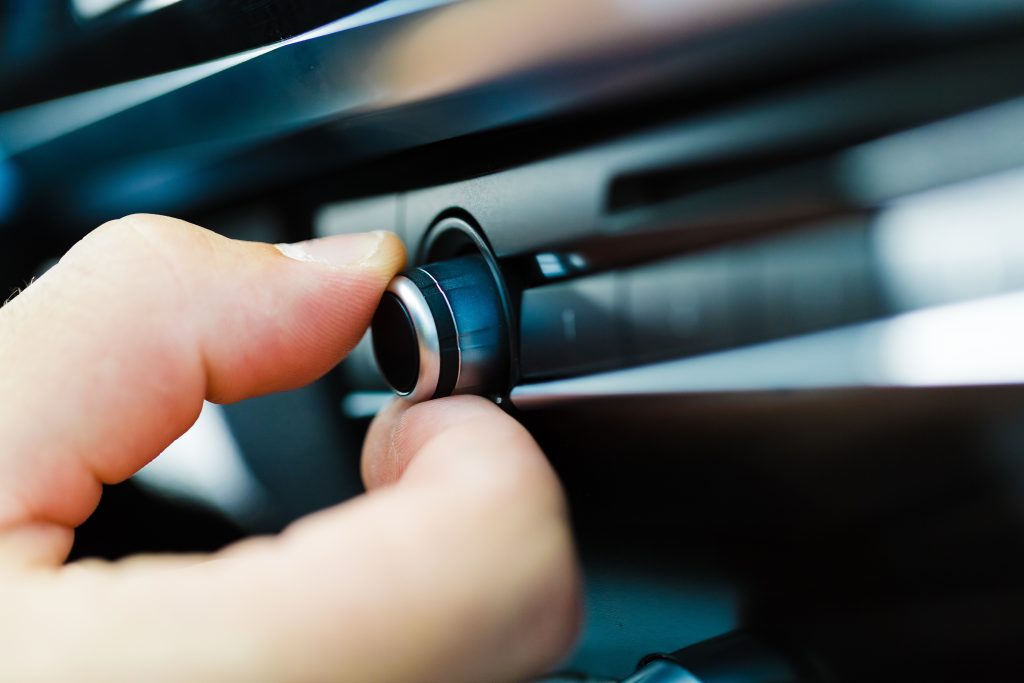Driving with or without music?
Music has been an integral part of driving. The choice of whether or not to play music while driving can make a huge difference in how you act behind the wheel. Playing music while driving influences performance and decisions in traffic, so knowing how music influences driving can help us understand and work it to our favor.
Why listen to music when driving?
There are many positive reasons. Long distances without company can make that trip quite …boring. Listening to music can keep you awake and it’s not us who’s saying that. It’s science. A report by CDC shows that about 4% of the drivers in a study admitted to falling asleep while driving in the last 30 days.
Listening to music can help you cope with road anxiety. But the effect of music on attitude behind the wheel goes beyond its ability to boost road confidence or keep you awake. Let’s go beyond the obvious, and see what research says about how music influences driving behavior.

Loud or silent?
Driving is a complex task, which if not carried out adequately can have serious safety consequences. So both volume and tempo play a large role in influencing the driving behavior. At high levels, fast and loud music can divert attention from driving and result in greater driving aggression. In general, loud music – approximately 120 to 130 decibels – may be a noise distraction for inexperienced drivers, because of increased heart rate (which can cause a driver to become careless). The ideal song tempo for safe driving should mimic the human heartbeat, which is around 60 to 80 beats per minute. As for the volume, 55 to 65 decibels is the optimum music volume for driving.
Loud music also hinders the driver’s ability to detect emergency sirens from ambulances or fire trucks. Because drivers listening to loud music have delayed reactions and are more likely to speed, they can put themselves into dangerous situations. And the consequences can be devastating.
How does the music genre influence driving behavior?
There are many different genres and each of them has a different influence on drivers’ moods, behaviors, and driving performance. There are studies that show how the choice of a song can influence driving behavior.
According to these studies, some music genres can make drivers aggressive and foster road rage. They also observed that more than 60% of rock fans admit to swearing or gesturing at other drivers and more than 30% of those drivers have been involved in a minor accident.
People who listen to jazz are more likely to get speeding fines. This is because jazz music gets people more involved and increases the mental workload while driving. This is due to the fact that drivers listen more analytically to jazz, and this can easily take their attention from speed.
The tempo of a song has a direct connection with driving performance. Faster beats are generally found to distort people’s sense of time and can make drivers speed more easily. Conversely, classical music and songs belonging to softer genres have been observed to make people drive more slowly. These sets of drivers are also less likely to lose their cool with other road users.
Lyrics or instrumental?
In short, music with lyrics is potentially more distracting than instrumental music. But there are other factors we should consider before switching completely to other genres: familiarity with the songs, likeability, and complexity (key changes, more instruments or voices, etc.).
Unfamiliar songs are likely to be more distracting compared to tunes we know well, as well as not enjoying the music.
Obviously, the effect of music on driving performance is greatly connected to the environment. In a complex and demanding one, such as a busy street, with pedestrians and lots of parked cars, playing music while driving can impact concentration. On the other hand, during long drives, music can help drivers stay focused and prevent drowsy driving.
What about radio broadcasts and their newest member, podcasts?
Driving to the workplace, during the commute time, drivers are more likely to listen to radio shows. While drivers listening to the radio do not over speed, news broadcasts and podcasts do captivate driver’s attention and can make them lose concentration behind the wheel.
A UK car insurance company has gone through analyzing which songs are safe to drive, meeting the human heartbeat criteria. You can listen to all of their selected songs in the playlist down below.
Oh, and even if it’s obvious, it’s worth repeating it one more time: if you do find yourself distracted, switch off the music and focus on the road.

Listen to your favorite music
Reduce uncertainty
Know exactly where you’re driving along with your favorite tunes. You don’t need to remember where the addresses are, Logistia Route Planner will help you enjoy the route every day.
[zcwp id = 5]